"Enter the Mandala: Cosmic Centers and Mental Maps of Himalayan Buddhism," explores the intricate world of Himalayan Buddhist art in a unique format. Assistant Curator of Himalayan Art at the Asian Art Museum, Jeff Durham, provided HuffPost Religion with an introduction to the exhibit.
This spring, the Asian Art Museum of San Francisco has created a uniquely immersive experience for its visitors by configuring one of its galleries as a three-dimensional mandala.
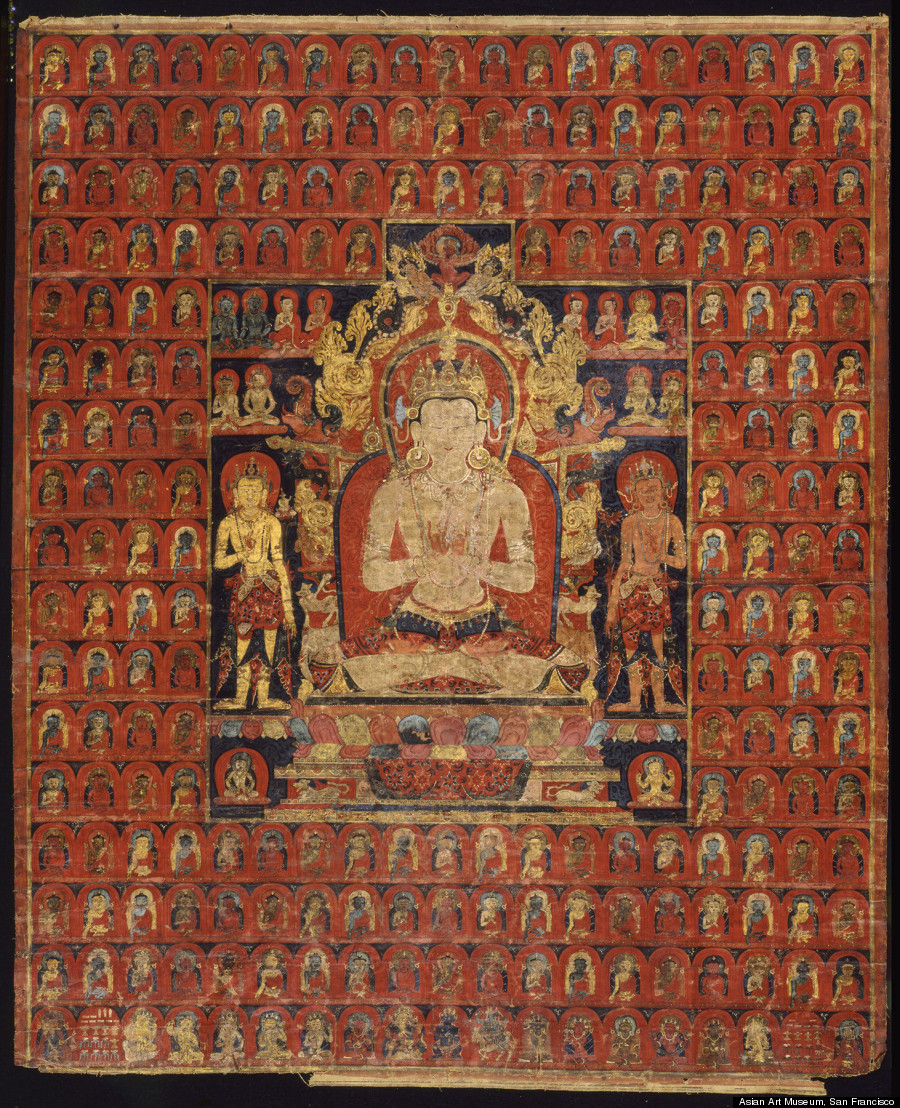
The cosmic Buddha Vairochana, approx. 1275-1350. Tibet, Sakya Monastery. Thangka; colors on cotton.
Museum purchase, City Arts Trust Fund
In Buddhism, mandalas are geometric maps of visionary worlds. They typically comprise a series of nested squares and circles that together define the center of the cosmos and the four cardinal directions. Minutely detailed and saturated with philosophical meaning, mandalas are a feast for the eyes and the mind.

The cosmic Buddha Vairochana, approx. 1100-1200. Tibet, Tsang. Thangka; colors on cotton.
Acquisition made possible by the Avery Brundage estate, Sharon Bacon, Mona J. Bolcom, Dr. Edward P. Gerber, Jane R. Lurie, Margaret Polak, Therese and Richard Schoofs, Dr. and Mrs. William Wedemeyer, and anonymous friends of the Asian Art Museum
For Buddhist meditators, however, mandalas are not just images to view, but worlds to enter. To work with a mandala, practitioners first re-create it in their mind’s eye, and then imaginatively enter its geometries. The resultant journey has a specific shape, proceeding from the east clockwise to the south, west, north and finally the center, the shape is similar to five spots on a dice.

Taima mandala, approx. 1300-1400. Japan. Hanging scroll; ink, colors and gold on silk.
The Avery Brundage Collection, B61D11+
A color-coded 'cosmic Buddha' presides over each symbolic direction, each of whom at once represents a psychological defect and the means of its transformation into fuel for enlightenment. For example, the green Buddha Amoghasiddhi sits in the northern sector of the mandala, and transforms frustration into success. The blue Buddha Akshobhya of the east transmutes hatred into reflection. Meditators change defects into their opposites by reciting the verbal formula (mantra) and the hand symbol (mudra) of each of these cosmic Buddhas.
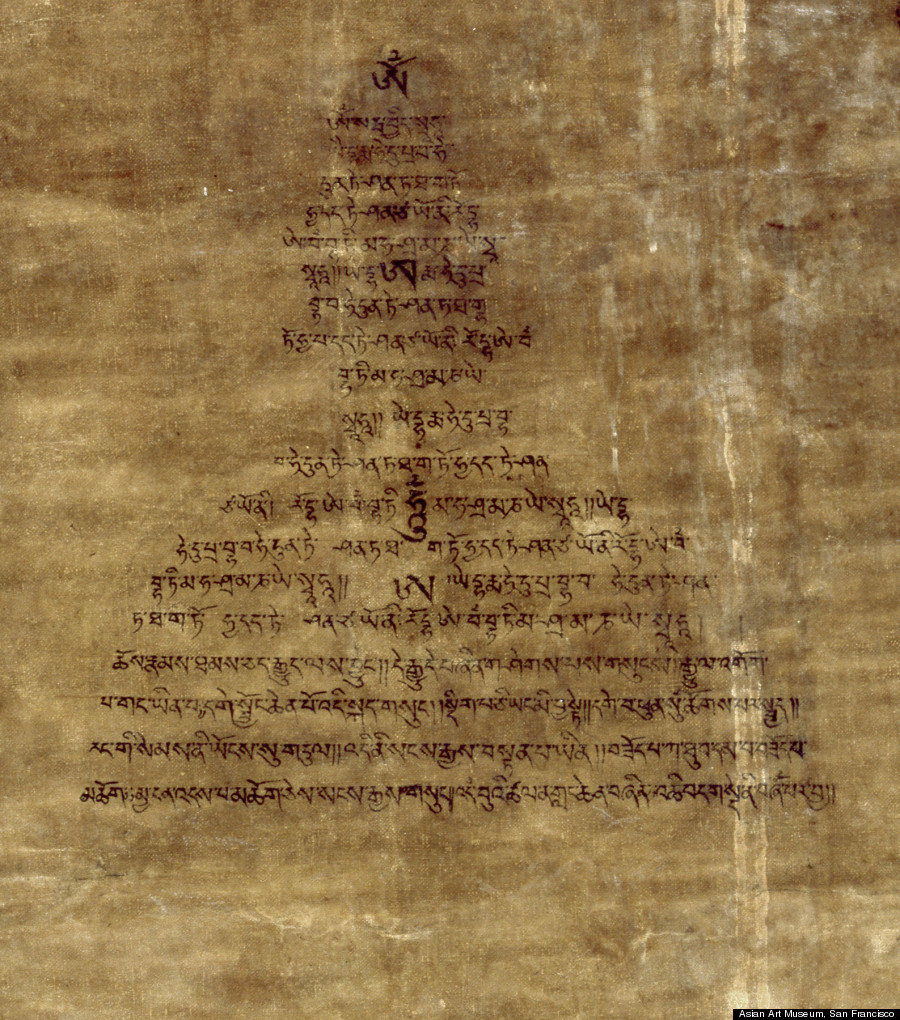
The cosmic Buddha Amoghasiddhi, approx. 1275-1350. Tibet, Sakya Monastery. Thangka; colors on cloth.
Museum purchase, City Arts Trust Fund
For museum visitors, there is a parallel but quite different question: Is it possible to experience being ‘inside’ the nested geometries of the mandala without years of meditative discipline—all while remaining as authentic as possible in our presentation?
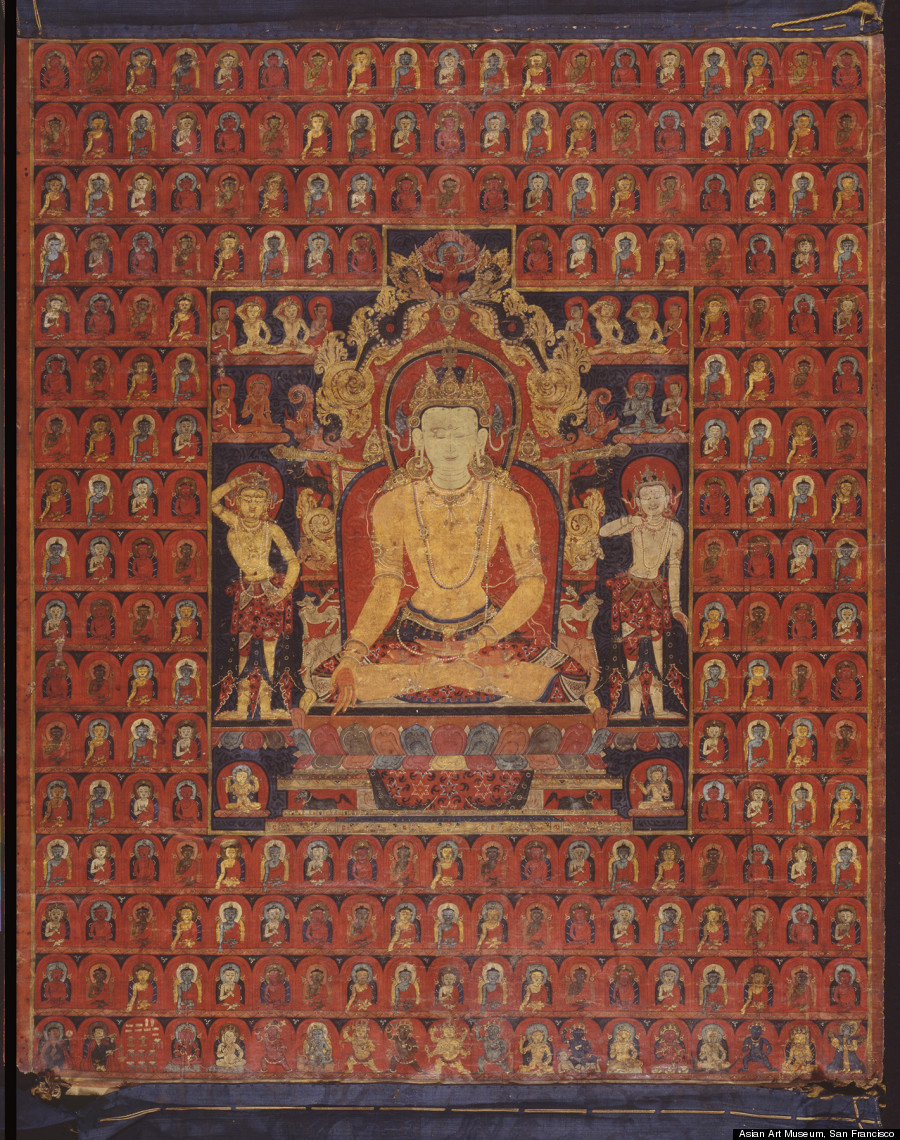
The cosmic Buddha Ratnasambhava, approx. 1200-1300. Tibet, Sakya Monastery. Thangka; colors on cotton.
Museum purchase, City Arts Trust Fund
The Asian Art Museum's mini-exhibition Enter the Mandala says 'yes.' As our starting point, we take three historically important, largely unpublished 14th century images from what was originally a set of five color-coded ‘cosmic Buddha’ paintings, each one corresponding to one of the cardinal directions or the cosmic center. We then place these paintings within the gallery according to their directional attribution, thus virtually transforming our space into an architectural mandala.

The cosmic Buddha Vairochana, approx. 1275-1350. Tibet, Sakya Monastery. Thangka; colors on cotton.
Museum purchase, City Arts Trust Fund
The result, on view through Oct. 26, 2014, is a mandala that can be entered physically in three dimensions. Visitors who enter this mandala will get a taste of what it might be like to find oneself inside the nested geometries of its intricate form—or perhaps even to recognize key aspects of their own awareness in the process.
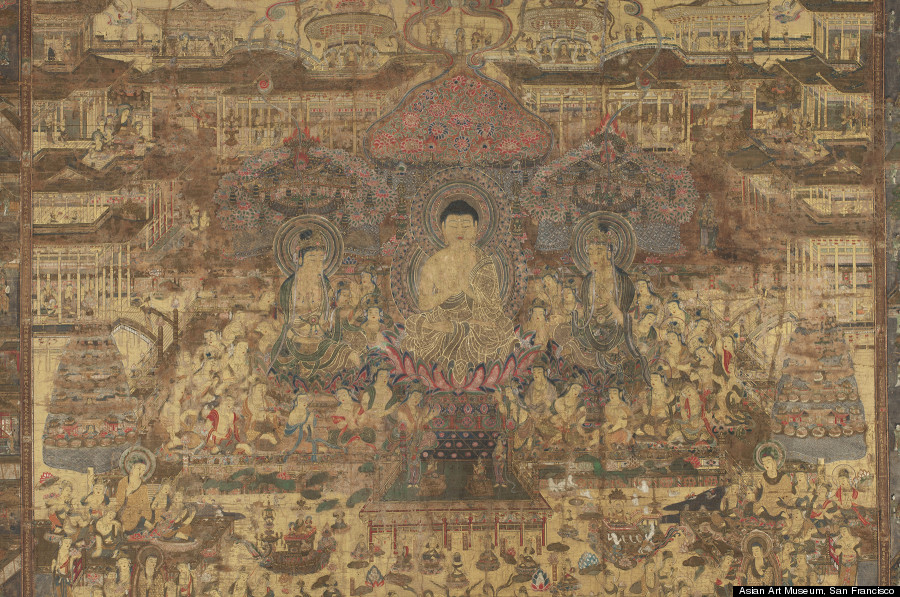
Taima mandala, approx. 1300-1400. Japan. Hanging scroll; ink, colors and gold on silk.
The Avery Brundage Collection, B61D11+

The cosmic Buddha Amoghasiddhi, approx. 1275-1350. Tibet, Sakya Monastery. Thangka; colors on cloth.
Museum purchase, City Arts Trust Fund
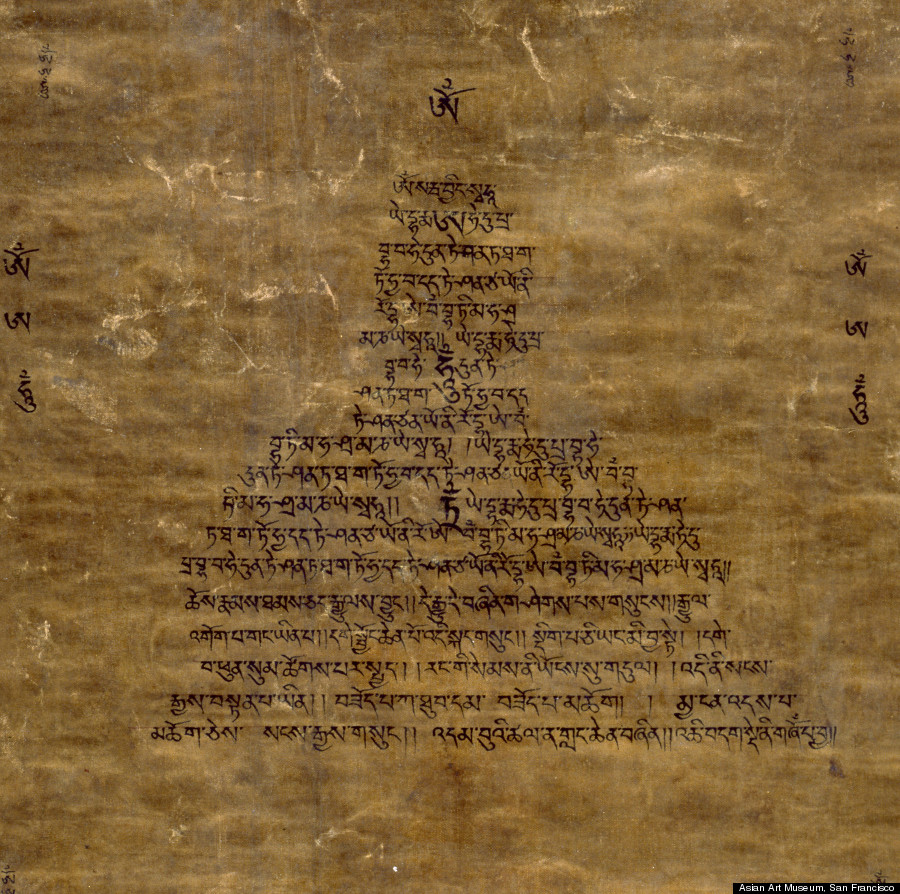
The cosmic Buddha Ratnasambhava, approx. 1200-1300. Tibet, Sakya Monastery. Thangka; colors on cotton.
Museum purchase, City Arts Trust Fund
Visitors can experience "Enter The Mandala" between March 14, 2014, and October 26, 2014, at the Asian Art Museum in San Francisco. For more information, visit the website here.
